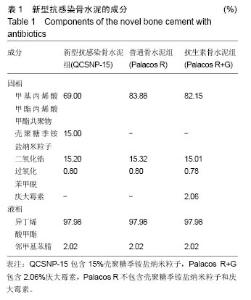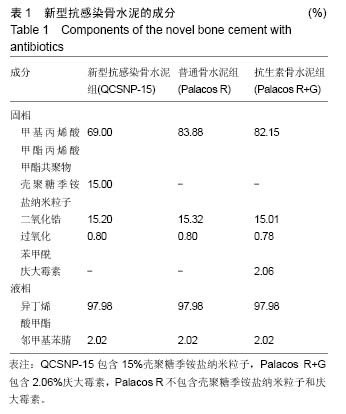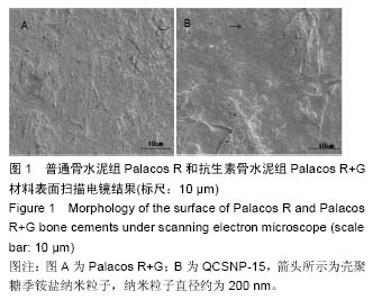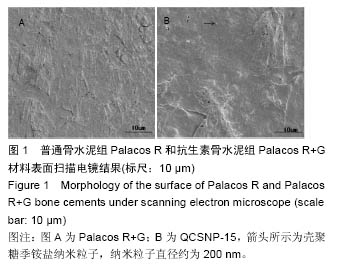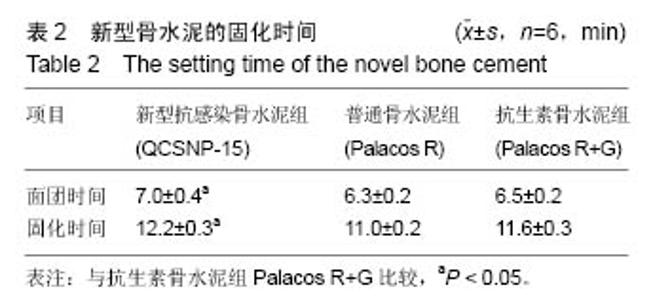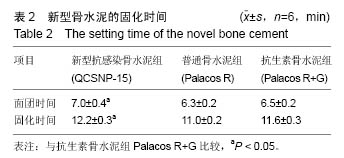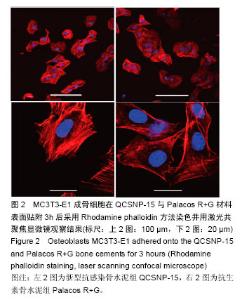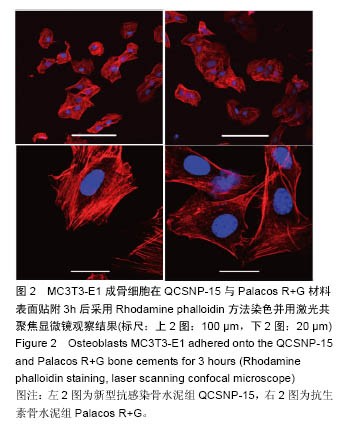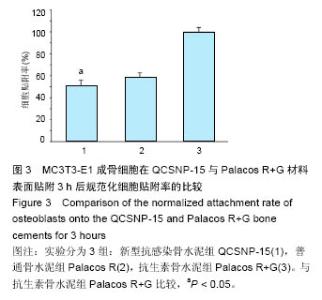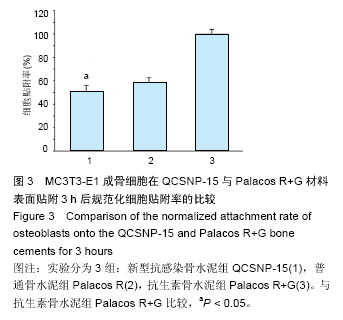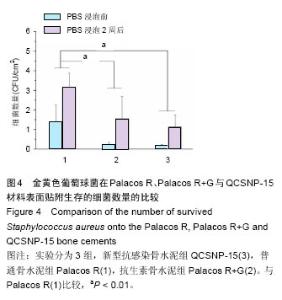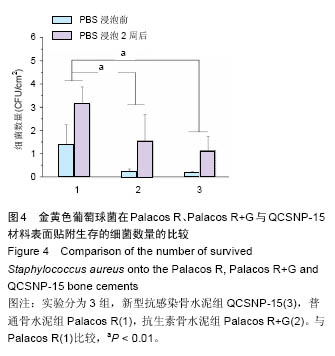| [1]Bosco J, Bookman J, Slover J, et al. Principles of antibiotic prophylaxis in total joint arthroplasty: current concepts. Instr Course Lect. 2016;65:467-475.
[2]Soares D, Leite P, Barreira P, et al. Antibiotic-loaded bone cement in total joint arthroplasty. Acta Orthop Belg. 2015;81(2):184-190.
[3]Conway JD, Hlad LM, Bark SE. Antibiotic cement-coated plates for management of infected fractures. Am J Orthop. 2015;44(2):E49-E53.
[4]Dzyuba GG, Reznik LB, Erofeev SA, et al. Efficiency of local cement reinforcing antibacterial implants in surgical treatment of long bones chronic osteomyelitis. Khirurgiia. 2016;(5):31-36.
[5]James A, Larson T. Acute renal failure after high-dose antibiotic bone cement: case report and review of the literature. Renal Failure. 2015;37(6):1061-1066.
[6]Hinarejos P, Guirro P, Puig-Verdie L, et al. Use of antibiotic-loaded cement in total knee arthroplasty. World J Orthop. 2015;6(11):877-885.
[7]Dueland R, Spadaro JA, Rahn BA. Silver antibacterial bone cement. Comparison with gentamicin in experimental osteomyelitis. Clin Orthop Relat Res. 1982;(169):264-268.
[8]Miola M, Fucale G, Maina G, et al. Antibacterial and bioactive composite bone cements containing surface silver-doped glass particles. Biomed Materi(Bristol, England). 2015;10(5):055014.
[9]Pauksch L, Hartmann S, Szalay G, et al. In vitro assessment of nanosilver-functionalized PMMA bone cement on primary human mesenchymal stem cells and osteoblasts. PLoS One. 2014;9(12):e114740.
[10]Lyutakov O, Goncharova I, Rimpelova S, et al. Silver release and antimicrobial properties of PMMA films doped with silver ions, nano-particles and complexes. Mater Sci Eng C Mater Biol Appl. 2015;49:534-540.
[11]Rau JV, Fosca M, Graziani V, et al. Silver-doped calcium phosphate bone cements with antibacterial properties. J Funct Biomater. 2016.
[12]Yin W, Li W, Rubenstein DA, et al. Biocompatible and target specific hydrophobically modified glycol chitosan nanoparticles. Biointerphases. 2016;11(4):04b301.
[13]Sarhan WA, Azzazy HM, El-Sherbiny IM. Honey/chitosan nanofiber wound dressing enriched with allium sativum and cleome droserifolia: enhanced antimicrobial and wound healing activity. ACS Appl Mater Interfaces. 2016;8(10):6379-6390.
[14]彭兆祥,郑慷,沈延东,等.关节假体表面壳聚糖季铵盐涂层的抗感染性能研究[J].中华关节外科杂志(电子版), 2014, 8(1):66-71.
[15]Subhapradha N, Shanmugam A. Fabrication of beta-chitosan nanoparticles and its anticancer potential against human hepatoma cells. Int J Biol Macromol. 2016;94(Pt A):194-201.
[16]Jang Y, Je YT, Yun CW, et al. Chitosan dosage regimen to trap fecal oil excretion after peroral lipase inhibitor administration in mice. Int J Biol Macromol. 2016.
[17]Abdelgawad AM, El-Naggar ME, Hudson SM, et al. Fabrication and characterization of bactericidal thiol-chitosan and chitosan iodoacetamide nanofibres. Int J Biol Macromol. 2016;94(Pt A):96-105.
[18]He Q, Chen H, Huang L, et al. Porous surface modified bioactive bone cement for enhanced bone bonding. PLoS One. 2012;7(8):e42525.
[19]Jiang S, Ma BC, Reinholz J, et al. Efficient nanofibrous membranes for antibacterial wound dressing and UV protection. ACS Appl Mater Interfaces. 2016.
[20]Whiteside LA, Roy ME, Nayfeh TA. Intra-articular infusion: a direct approach to treatment of infected total knee arthroplasty. Bone Joint J. 2016;98-b(1 Suppl A): 31-36.
[21]McGlothan KR, Gosmanova EO. A case report of acute interstitial nephritis associated with antibiotic-impregnated orthopedic bone-cement spacer. Tenn Med. 2012;105(9):37-40.
[22]Pinto DC, Pace ED. A silver-stain modification of standard histological slide preparation for use in anthropology analyses. J Forensic Sci. 2015;60(2): 391-398. |
